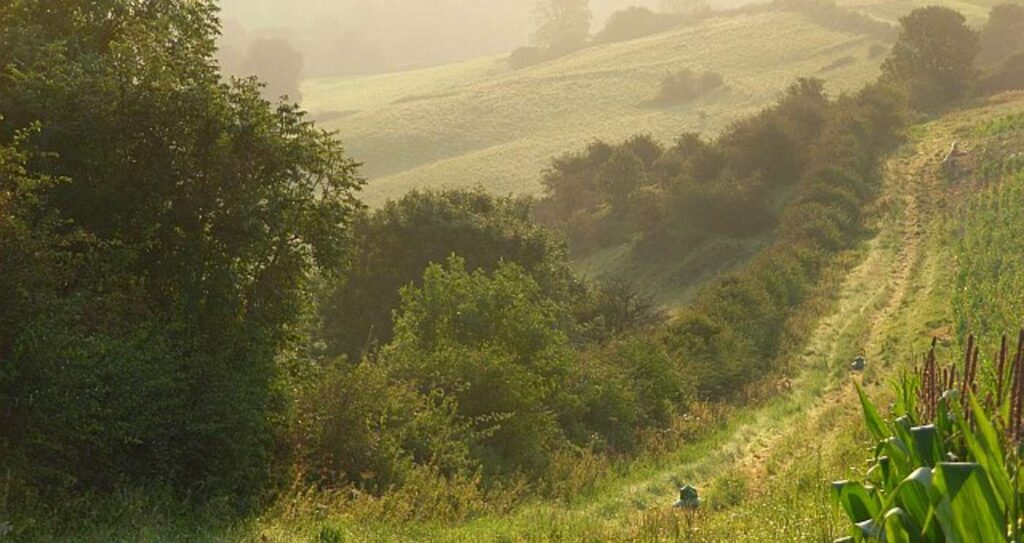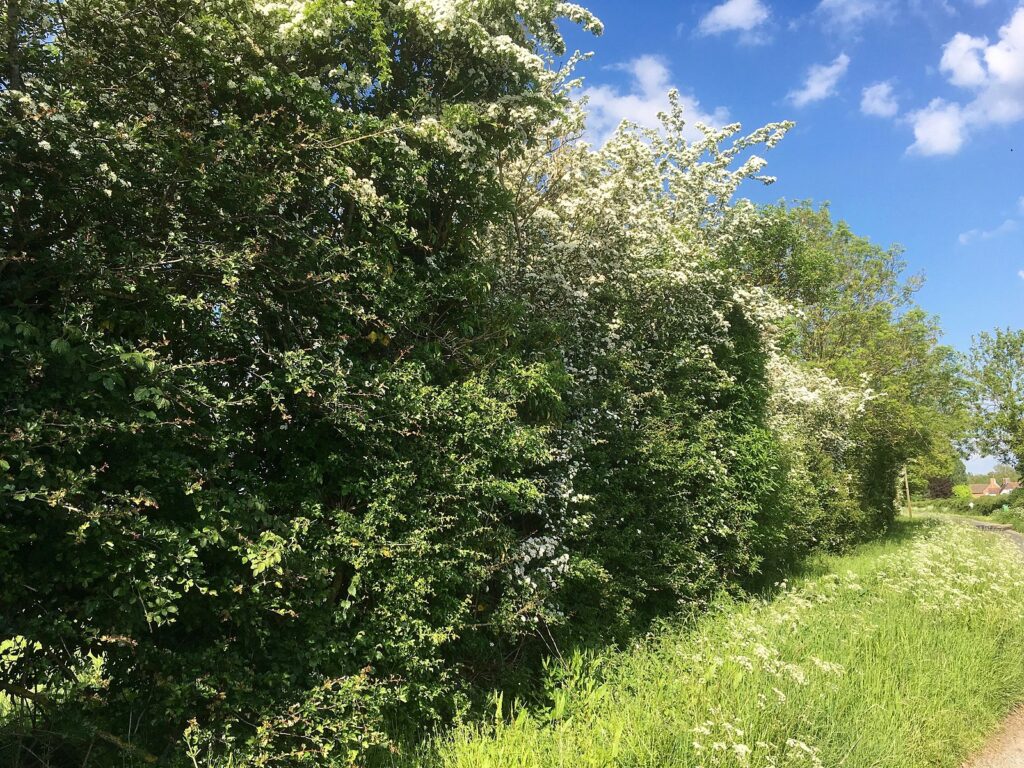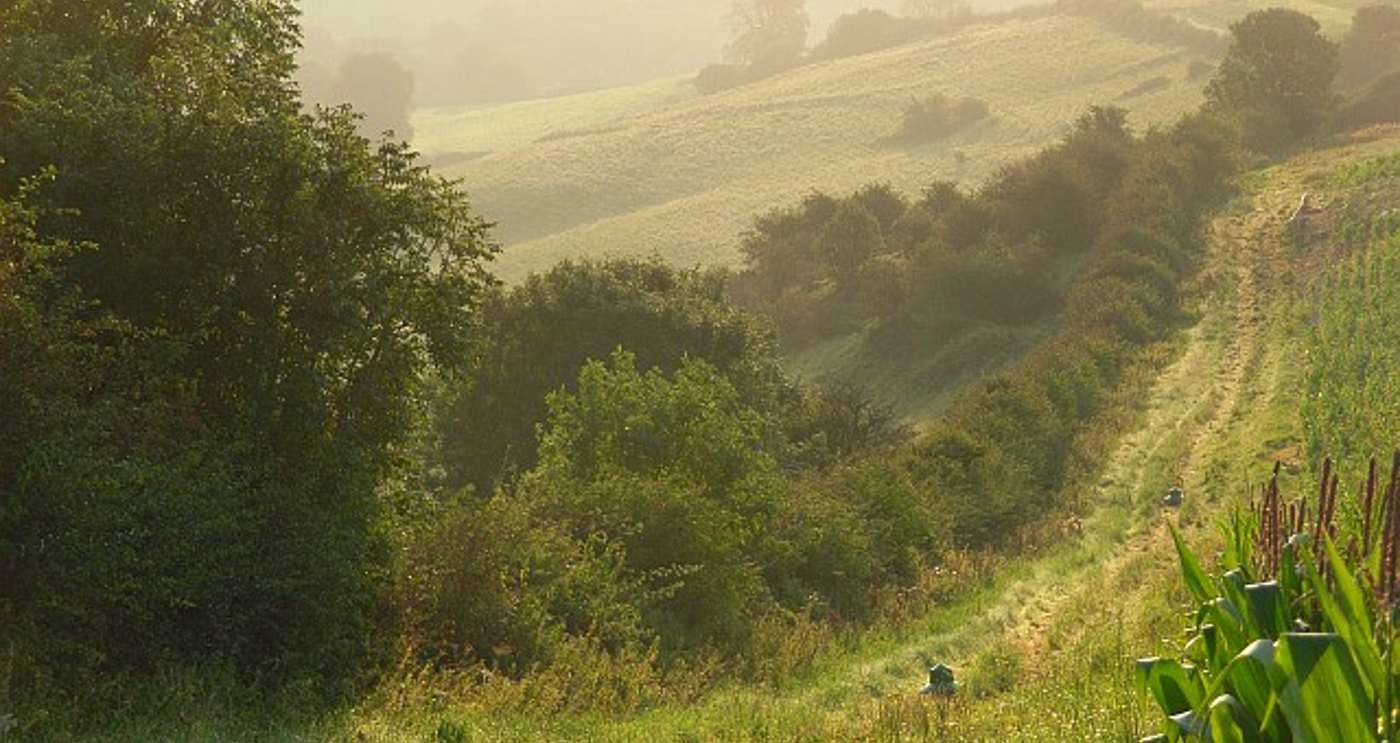
The humble hedgerow is a staple sight in any countryscape in Europe and parts of North America. A British mainstay, some scientists suspect they act as ecosystem anchors that can play host to more than 2,000 different species of plants and animals in a single year.
Indeed, one journal published an English ecologist’s report on an old hedgerow near his house that throughout the year contained 2,070 species, from badgers to many hundreds of insects.
“Hedgerows define our countryside and provide many environmental services, but are also vitally important for wildlife as a refuge, a source of food, and as corridors along which they can move through the landscape,” write the National Hedgelaying Society, the only charity dedicated to maintaining the traditional skills of hedgelaying and encouraging the use of hedgerows for wildlife and landscape.
There are 435,000 miles of hedgerows in Britain, stretching and winding farther than the entire British road network. Sometimes built to keep people out, other times to keep animals in, there are 30 recognized traditional styles of hedgerows, some of which date back an astonishing 800 years.
Home, hotel, and highway all in one
While appearing like a manicured wood wall, or a tangled mess, the species richness of hedgerows in Belgium was actually found to be higher than in the nation’s forests; 30% higher. This can partly be explained by hedgerows being a microcosm of the forest ecosystem. A high reaching canopy shades and keeps moist an understory that attracts a variety of fungi and animals. This in turn stimulates competition and diversity among plants battling for light, pollinators, and other resources.
This diverse environment attracts pollinators to spring and summer blossoms, which can lead to bees making it their home and increasing adjacent crop yields. The sheltered habitat attracts insect-devouring birds, which in California was found to save $4,000 a year in insecticide costs for a 1,000 foot hedgerow. They also attract insects like wasps and hornets which eat aphids and other unwelcome diners in a vegetable garden.

Hedgerows are essentially highways of countryscapes. Badgers, hazel dormice, and hedgehogs use them as cover to move around stealthily. In agricultural areas, one study found that hedgerows are the single best way to connect fragmented stretches of forest or unmanaged fields, and as such can be critical for keeping populations of animals healthy.
Nocturnal animals like moths and bats use hedgerows as flight paths to safely navigate built up rural areas. Two-thirds of observed moths were sitting on or traveling parallel to a hedgerow during their movements at night.
RELATE: Government Saves Rare Old-Growth Trees From Further Logging on 10,000 Sq-Miles of BC Forest
Like all plants, the growth that makes up a hedgerow stores carbon, and the British government suspects that the since hedgerows can live so long, they could be a good way to absorb greenhouse gas emissions rather than simply planting trees. But that’s not the only protective effect they have. Hedgerows act as a strong defense against soil erosion by preventing rains or winds from dispersing the soil in a paddock out into streams or streets. One study even found they can help reduce the spread of disease between livestock.
For all these reasons, many countries are acting to increase their hedgerow coverage. In January, French President Emmanuel Macron committed €50 million to planting 4,300 miles of hedgerows. In Britain, a non-profit action group representing the government’s official conservation watchdog has a petition going to expand Britain’s hedgerow network by 40%, approximately 120,000 miles, based on recommendations from the country’s Climate Change Committee.
Most of the ways humans artificially engineer the land tends to be seen as negative, but back in the dawn of the modern period, the obsessive habit of farmers separating their paddocks from the neighbor’s created an almost magical feature of the environment that all living things congregate in.
GROW the Good Green News; Share This Story…




















